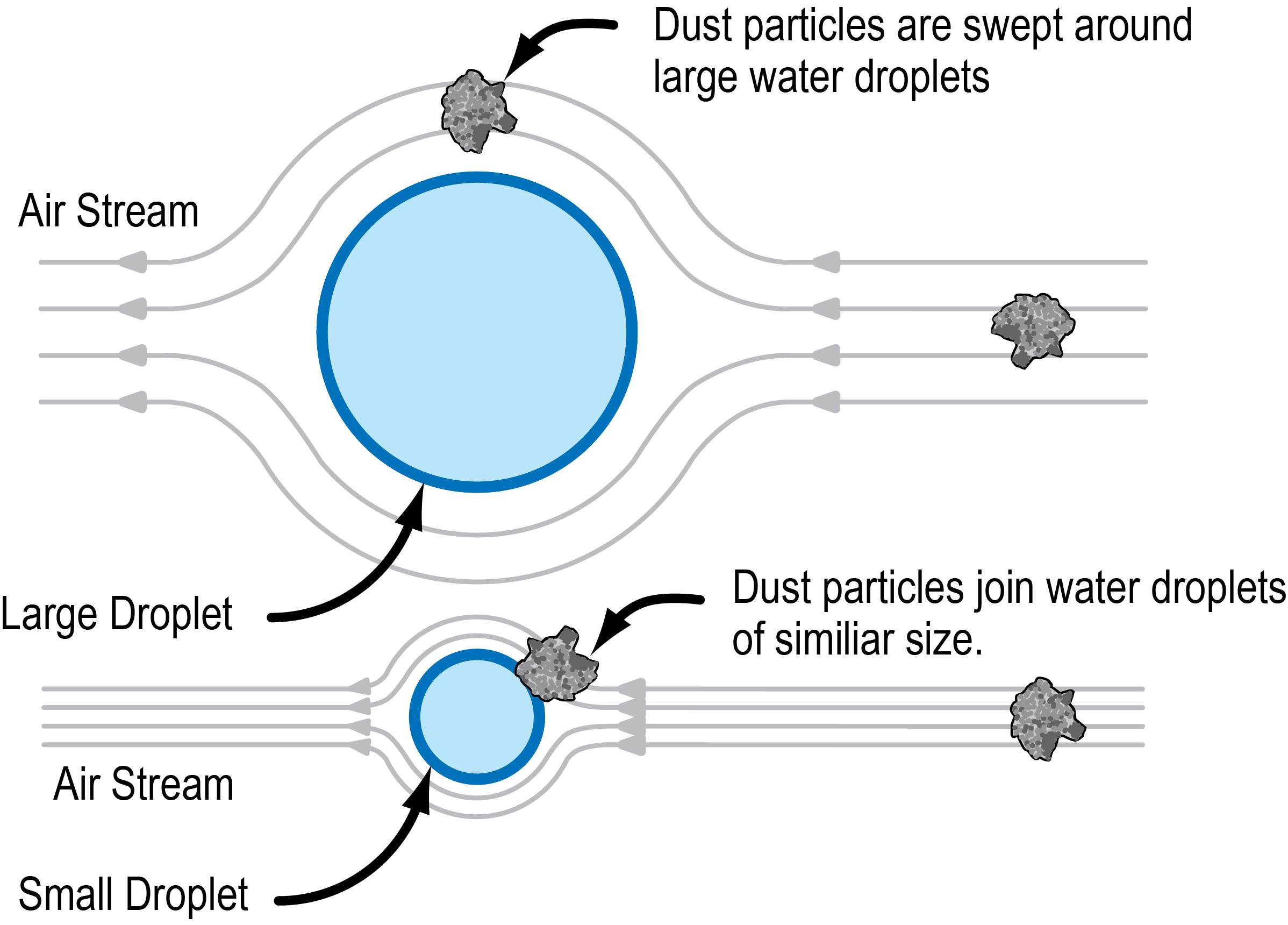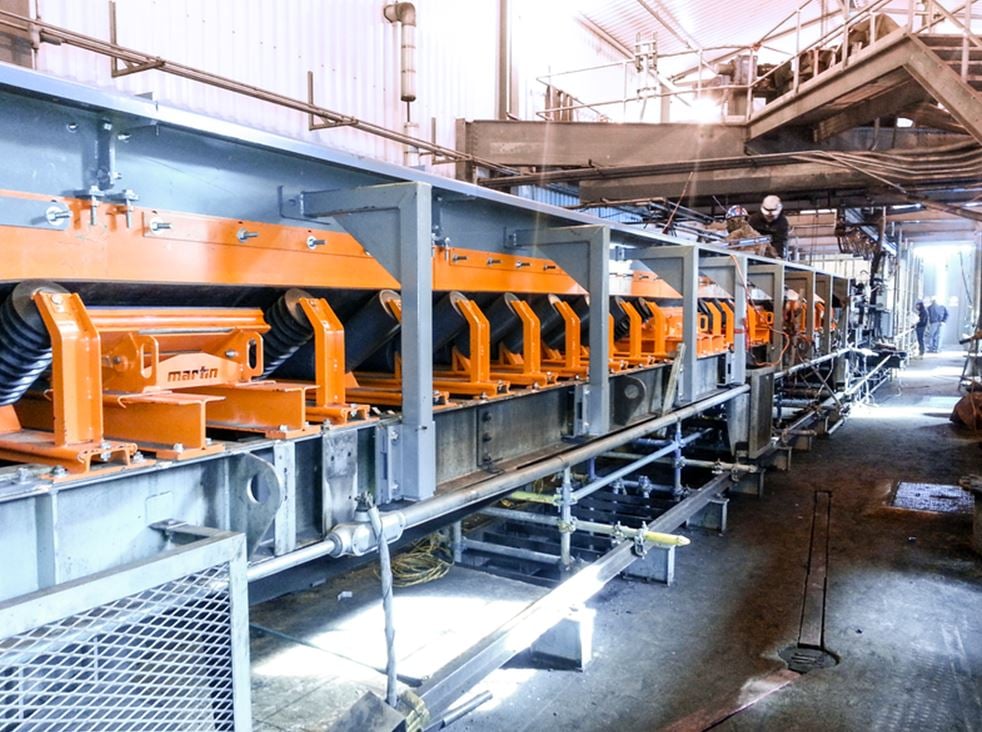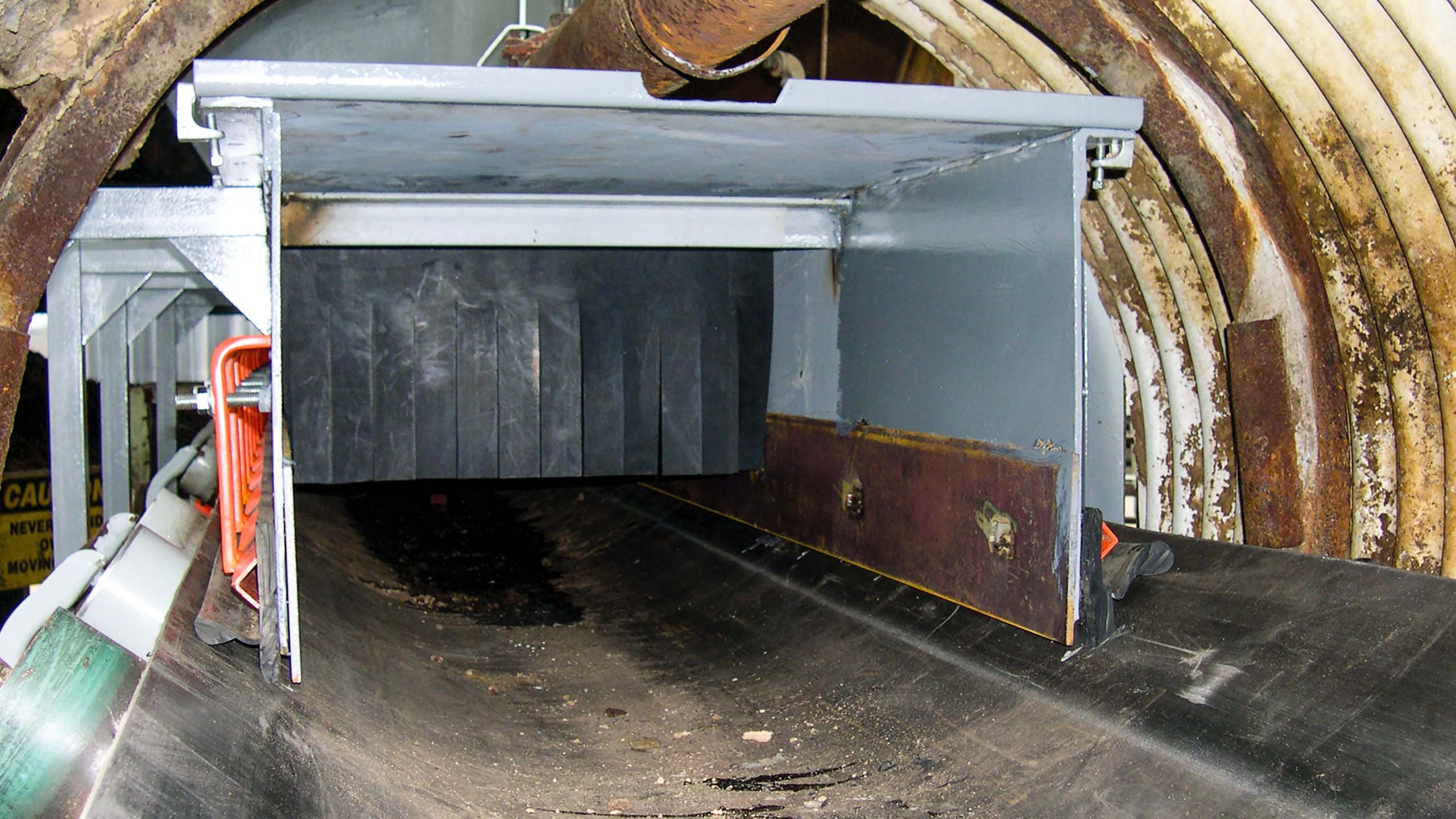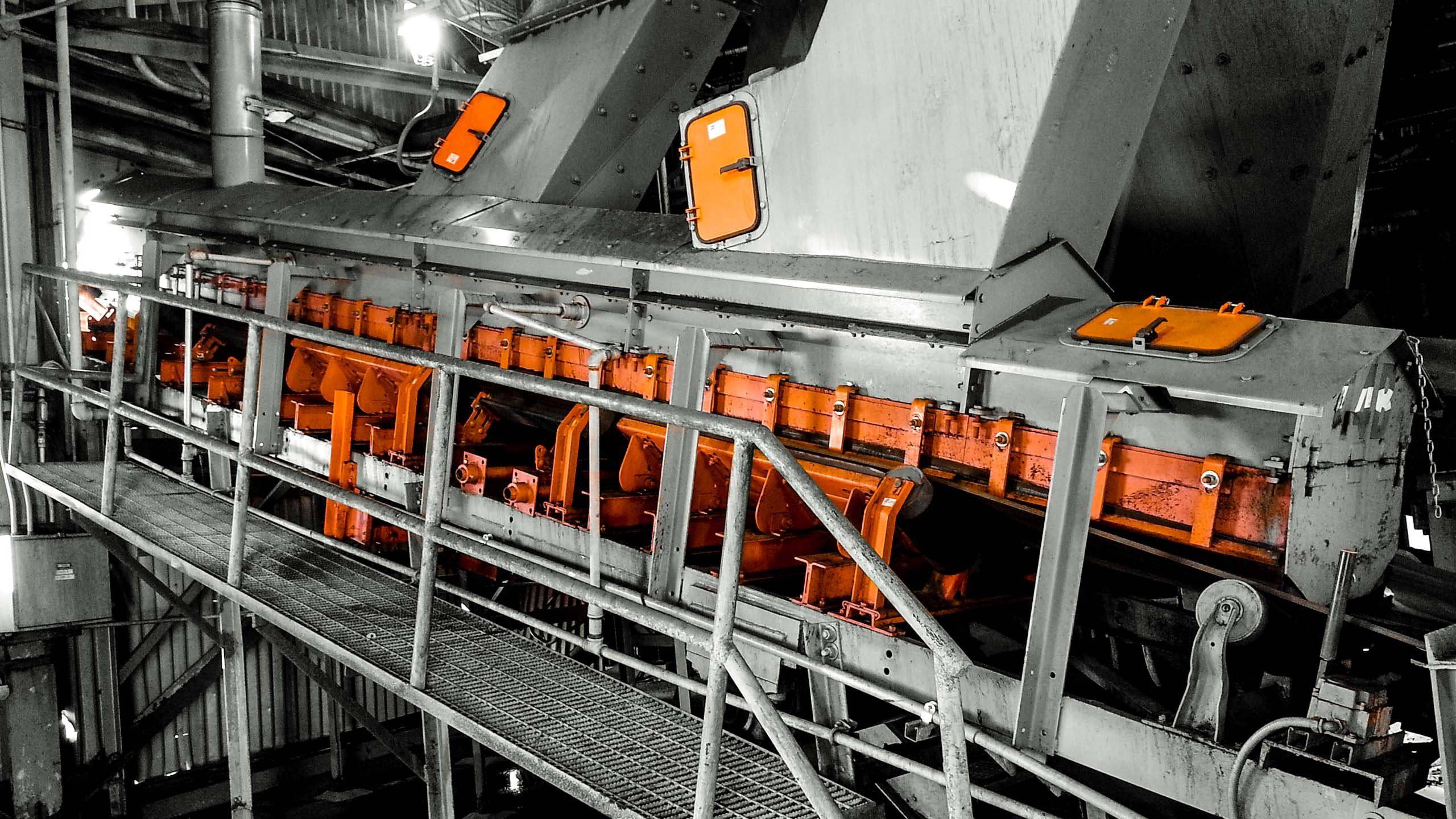Suppression with Water
Perhaps the oldest method for controlling fugitive dust is the application of water sprayed over the body of material. By wetting fine particles as they lay in the bulk materials, or as they are being carried by the air, The weight of each particle is increased, making it less likely for the particle to become, or stay, airborne. Moisture increases the cohesive force between dust particles, making them more likely to agglomerate creating larger, heavier groupings of particles and making it more difficult for air movement to carry off fines. This is most effective when applying the water through a series of properly sized spray nozzles at a point where the material expands and takes in air, such as during discharge from the head pulley in a transfer chute.
Water can also be applied to create a "curtain" around a transfer point. Dust fines that become airborne will come into contact with this water "barrier," increasing their mass and removing them from the air stream.

The most effective water sprays are low velocity systems. High velocity sprays can add velocity to the air and the dust particles in the air. This energy is counterproductive to the task of returning the dust to the material body.
The Pluses and Minuses of Water Sprays
Water based suppression systems become more sophisticated as the engineering moves beyond "water hose" technology in the effort to improve results. The effectiveness of water spray systems is dependent on the velocity of the applied water, the droplet size, the size of the nozzle opening, and the location and number of spray nozzles. Techniques to improve water spray dust suppression include a reduction in droplet size, an increase in droplet frequency, or a decrease in the droplet’s surface tension, making it easier for droplets to merge with dust particles.
Water spray systems offer some advantages. The application systems are relatively simple to design and operate. Water is generally inexpensive, relatively easy to obtain, and generally safe for the environment and for workers who are exposed to it. Dust suppression systems utilizing water are relatively simple systems and do not require the use of costly, elaborate enclosures or hoods. Changes can be made after start-up with minimum expense and downtime. Water based suppression systems are simple to install, less subject to problems from wind or air velocity, and, due to the large orifices in their spray nozzles, do not normally require filtered water. The systems are typically cheaper to install and use far less space than "dry" dust collection systems.
Unfortunately, the application of water has several liabilities as well. Restrictions on fresh water consumption are common in mine operating permits, as well as in many other industrial operations. Most water suppression systems must use recycled process water, rather than more expensive potable (drinking quality) water. This process water may have contaminants or chemicals in it that can clog or corrode the spray components. The use of water may promote accelerated corrosion of conveyor structures and components.
Another drawback is that water has only a minimal residual effect once the water evaporates, the dust suppression effect is gone. In addition, large droplets of water are not good at attaching to small dust particles: To increase the result, more water is often applied, which can create disposal and cleanup problems.
See Also: Water Suppression to Control Belt Conveyor Dust Part Part 2.




















Leave Comment